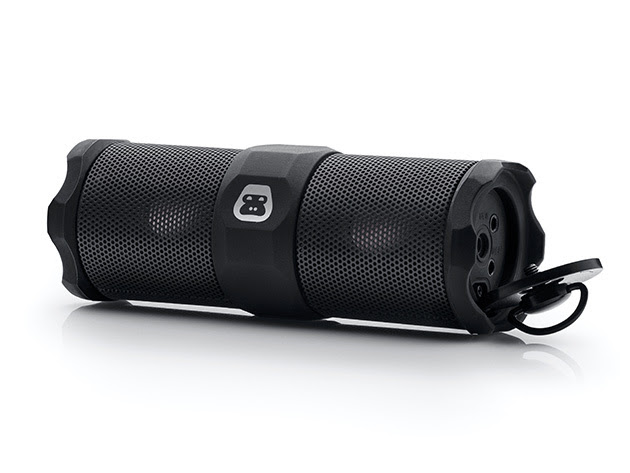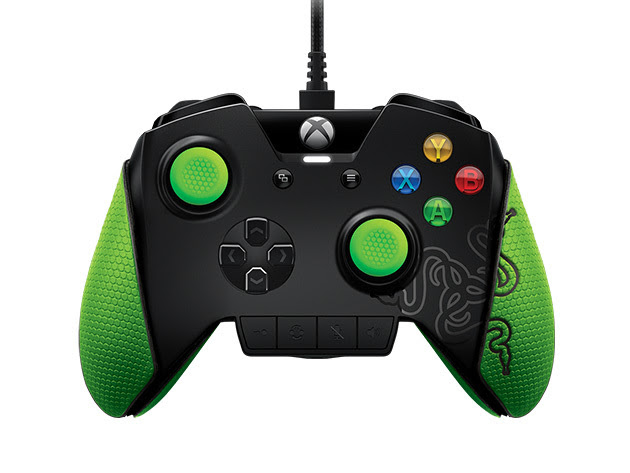You know your retail business needs a strong omnichannel presence. Here’s how to do it...

If anything you do touches retail or e-commerce, you know it isn’t enough to focus on a single sales channel anymore.
The winners will undoubtedly be those who master omnichannel sales. In fact, creating a strong, cohesive, multi-channel operation can make or break your business.
A recent Fluent survey found that 47% of shoppers who engage with retailers across 10 or more channels make purchases from their favorite retailer's website at least once a week, compared to just 21% for those who engage across one to four channels.
And social is becoming increasingly important, as Epsilon found that retailers' social channels led 29% of US shoppers to try a new brand or product. That figure was 28% for brands' social media and 22% for consumers' friends' social media.
Customers expect convenience and a variety of options when making a purchase. Brick and mortars must be able to seamlessly carry the experience online, through social, and on mobile. Even online giants like Amazon are experimenting with physical locations in order to accommodate their customers in a multitude of ways.
With thousands of hours of research condensed into in-depth reports, BI Intelligence is here to help you with your omnichannel strategy and has developed an exclusive bundle of reports entitled:

Today we are offering you an exclusive opportunity to gain access to the research that will help you develop a strong omnichannel sales strategy. If you were to purchase these 16 pieces of research individually the cost would add up to $7,820. An inconsequential sum when you consider the drastic difference just one of these reports can make to your bottomline. However, by bundling all of the reports together in the BI Intelligence Omnichannel Strategy Bundle you can save an immediate 87% today.
Here are the extensively researched guides that are included from our team of industry experts:
The Future of Retail Slide Deck
(A $495 Value)
The retail industry is on the cusp of a fundamental transformation driven by digital technologies. And as retailers adapt to the digital age, the line between physical and digital commerce is becoming increasingly blurred.
This slide deck explores the most disruptive trends in e-commerce.
The Store of the Future Report
(A $495 Value)
Brick-and-mortar retailers are scrambling to win back consumers who are increasingly turning to the web to make their purchases.
To catch up with changing consumer behavior, physical retailers are adopting digital technologies – from beacons to interactive fitting rooms – to keep customers engaged and coming back for more. These in-store technologies are interactive, productive tools designed to catch the attention of increasingly tech-savvy consumers.
In this report we explore the top five in-store technologies that represent the future of retail. To test out some of these hi-tech upgrades ourselves, we visited several New York City-based retailers that have implemented these technologies in their stores. We take a close look at these technologies, assess their user-friendliness, and project their potential benefits. The report also lays out some potential barriers and drawbacks for these tools as the lines between online and physical retail continue to blur.
The New E-Commerce Strategies Report & Slide Deck
(A $890 Value)
No period of time offers a clearer window into how consumer and retailer shopping trends are shifting than the holiday season. The fourth quarter is always the busiest time of year for brands and retailers — it's the period when retailers move from red to black.
The 2015 holiday season gave us the clearest indication yet that there's never been a better time to be a consumer. The rise of online and mobile shopping has given consumers more choice, flexibility, and often better service, and retailers are shifting their strategies to keep up.
In this report and slide deck we look at some of the top trends that affected retailers at each stage of the purchase funnel and how they're responding to those shifts.
The Payment Gateways Report
(A $495 Value)
The rapid rise of online and mobile retail sales has opened up a new market for payments companies to pursue, and is also creating a new generation of online payment providers called gateways, which act essentially as the online version of an in-store payment terminal. Companies like Braintree, Adyen, and Worldpay help process online transactions, which are growing much more rapidly than in-store sales.
Payment gateways specifically stand to benefit from the rapid growth of the online processing market, worth an estimated $10.7 billion this year, even though their revenue is a very small slice of the total. BI Intelligence estimates that the US online processing market will increase at a five-year CAGR of 13% to $17.5 billion by 2020, driven by the increase in online shopping volume.
Gateways could moreover be disruptive to the old guard of processors. For example, Alipay has become a top-ten global merchant acquirer almost overnight because of its massive processing volume through Alibaba's marketplaces. And the emergence of online-to-offline (O2O) and omnichannel commerce is giving gateways a chance to divert significant in-store volume away from legacy processors.
This report explains what payment gateways do, the benchmarks on which they compete, their growth drivers, the key players, and assesses the potential for gateways to impact legacy processors.
Learning From Mobile Payments in China Report
(A $495 Value)
The US payments ecosystem is in the midst of a shift toward mobile, and countless new and old stakeholders are attempting to accelerate this migration, which is moving at a glacial pace relative to other markets globally. But mobile payments can rise to the mainstream. For companies seeking to build out a robust mobile payments product, China's thriving mobile payments ecosystem offers some insight — and some lessons.
Total mobile payments volume in China will reach $6.3 trillion by 2020, according to our estimates based on iResearch data. This marks a healthy 33% five-year compound annual growth rate (CAGR). In comparison, the US will generate $154 billion in mobile payments volume this year by our estimates, which amounts to just 6.5% of China's mobile payments volume.
Even accounting for population discrepancies, China will generate over $1,700 in mobile payments volume per capita in 2016, compared with $475 in the US, based on forecasts from BI Intelligence and eMarketer. China's advantage will eventually diminish, but it will still produce around twice as much volume per capita in 2020.
China has unique factors buoying the industry, like the dominance of mobile phones, a lack of legacy infrastructure, and the surging popularity of digital retail marketplaces. Some of the characteristics behind the country's success can be mimicked, or even replicated to some extent, in other markets like the US. However, one fundamental barrier in the US is that it's being forced to layer mobile payments on top of an existing payments system, and the ecosystem is very fragmented.
This report takes a deep dive into China's mobile payments ecosystem and deciphers which growth drivers can be exported to the US to help spark its relatively lackluster market.
The Beacons & CPG Report
(A $495 Value)
Beacons are one of the most important new in-store technologies. These small, inexpensive pieces of hardware, which communicate with smartphone apps via Bluetooth, are helping brick-and-mortar retailers enhance customer loyalty, gather data about their customers, and provide an entry point for in-store shoppers to become more digitally engaged.
As the devices begin to go mainstream, brands and retailers in the consumer packaged goods (CPG) market stand to see the biggest lift from beacon programs. That's because CPG products are typically inexpensive items that are purchased frequently. This allows beacons to gather lots of data on shopping habits and use that data to send personalized, location-based messages.
Over the past year, numerous major CPG retailers have rolled out beacons to brick-and-mortar locations, including Rite Aid, Walmart, and Target. The devices are being used in a variety of ways to reach customers at various steps in the path to purchase. While beacons are most commonly associated with pushing coupons and discounts, they are also helpful in the planning stage and for discovering new products through personalized content and advertisements.
In this report we forecast the amount of CPG sales that will be triggered by beacons this year, looks at why CPGs are the best market for implementing beacons, and discusses how CPG retailers are currently using them. We also outline some of the potential barriers to successful beacon engagement for CPG retailers.
The Affiliate Marketing Report
(A $495 Value)
Affiliate marketing now drives as many e-commerce orders in the US as email. Both channels currently account for 16% of US e-commerce orders, according to marketing firm Custora. This makes affiliate marketing one of the four largest sources of e-commerce orders, outperforming social commerce and display advertising.
Meanwhile publishers still generate the bulk of their revenue from advertising, but affiliate marketing is growing faster, per our sources. In an effort to balance editorial integrity and revenue needs, publishers are taking a more native approach to affiliate marketing by embedding product links within organic content and it seems to be working. Approximately 15% of the digital media industry's revenue now comes from affiliate marketing.
In this report we examine the changing face of affiliate marketing and take a close look at the key players. We also outline growth opportunities for affiliate marketing and how we see this industry developing.
The Shopping Cart Abandonment Report
(A $495 Value)
Shopping cart abandonment — when shoppers put items in their online shopping carts, but then leave before completing the purchase — is the bane of the online retail industry.
But it's also a huge opportunity: Approximately $4 trillion worth of merchandise will be abandoned in online shopping carts this year, and about 63% of that is potentially recoverable by savvy online retailers, according to BI Intelligence estimates.
In this report we explain what leads a shopper to abandon an online purchase and how retailers can begin to combat rising shopping cart abandonment rates. We collected and analyzed data from top e-commerce companies, and spoke with industry experts whose job it is to reduce abandonment rates and boost conversions, to come up with a number of solutions that can help retailers recover lost sales.
The Customer Service Report
(A $495 Value)
The quality of customer service consumers experience can significantly impact a retailer's bottom line. In fact, 66% of US consumers are willing to spend more money with a company that provides them with excellent customer service, according to Microsoft, while 60% of consumers say they have not completed an intended purchase due to a poor customer service experience.
As consumers increasingly buy products online that they haven't seen in person — leaving room for purchasing errors and buyer's remorse — it's now more important than ever to provide customers with positive customer service experiences.
In this report we look at why customer service matters, which stalwart channels are still top performers, and which new channels have the most potential. We also take a look at why luxury retailers, or even just retailers with high-income consumers, need to be especially attuned to providing solid customer service help.
The Click & Collect Report
(A $495 Value)
Click and collect — a fulfillment option that lets shoppers place an online order and pick it up at a store — is thriving in the UK. In fact, over half of UK shoppers report having used this method in the past year, according to a survey from JDA & Centiro conducted in April 2016.
However, the US is far behind on the click and collect trend, with just 27% of consumers using the service. This is largely due to slower growth in mobile commerce, and specifically, the hesitancy shoppers feel about using mobile retail apps.
Retailers in the US can look to the growth drivers in the UK to help drive up their own click and collect sales. Most notably, mobile commerce and adoption by grocery chains are driving shoppers in the UK to use click and collect.
In this report we break down the growth factors behind click and collect in the UK. We discuss the retailers successfully implementing the fulfillment method, examine the of impact consumer behavior, and outline some key steps that US retailers can take to replicate the UK's performance.
The Mobile Checkout Report
(A $495 Value)
As millennials and younger consumers become larger parts of the key spending demographic, mobile devices like smartphones and tablets are quickly becoming consumers' primary computing device. But for retailers, that poses a key challenge: Users are spending considerable time shopping on mobile, but making relatively few purchases.
As a result, social networks, payment processors and card networks, and retailers themselves, are all developing solutions that make it easier for users who shop on mobile to begin to buy on mobile, and then channeling funds into products that incentivize users to do so.
By presenting options like on-site buy buttons, single-click checkout, financing services, and unified offline-to-online commerce experiences, various brands are beginning to convert desktop shoppers to mobile. But mobile wallets are beginning to take hold, and if they can successfully combine multiple features that ease barriers to mobile purchasing into one payment platform, they could hold the ticket to retailer success in increasing mobile purchases.
In this report we predict how e-commerce will change and m-commerce will grow, explain why users are shopping, but not buying, on mobile devices, look at how stakeholders are looking to attract these users, and showing how products like mobile wallets could be game-changing in terms of mobile retail.
The Mobile Marketing Report
(A $495 Value)
Mobile marketing is getting more spotlight these days. Revenue from mobile advertising accounted for 30% of total ad spend in the first half of 2015, according to the IAB, and it's on track to account for more than one-third in the second half of the year. Despite this growth, mobile ad spend still lags mobile time spent by consumers, indicating that marketers are still toeing the mobile marketing waters.
The technologies and communication mediums inherent in mobile devices offer marketers looking to reach consumers on mobile a wide assortment of options for sending the right message to the right consumer at the right time.
In this report we take a close look at the different mobile marketing tactics being used today, spanning legacy mobile technologies like SMS to emerging capabilities like beacon-aided location-based marketing. We also identify some of the most useful mobile marketing technologies that mobile marketers are putting to good use as parts of larger strategies.
The Social Commerce Report
(A $495 Value)
Social media may still only drive a small share of total online retail sales, but its impact is becoming impossible to ignore. Social-driven retail sales and referral traffic are rising at a faster pace than all other online channels.
The top 500 retailers earned $3.3 billion from social shopping in 2014, up 26% from 2013, according to the Internet Retailer's Social Media 500. That is well ahead of the roughly 16% growth rate for the overall e-commerce market in the US.
Now new initiatives from a number of different social networks are making these platforms absolutely essential for retailers that want to drive sales and boost engagement.
In this report from BI Intelligence we analyze social media's role in online retail — whether that's driving direct sales with the use of embedded "Buy" buttons on social media posts, or referring traffic to retailers' websites and apps. We measure the impact social media has on e-commerce by looking at metrics such as conversion rates, average order value, and revenue generated by shares, likes, and tweets. We also outline the latest commerce efforts by leading social networks.
The Future of Shipping Report
(A $495 Value)
The parcel delivery industry — a segment of the shipping sector that deals with the transportation of packages to consumers — is booming thanks to e-commerce growth, and players outside the industry want a piece of the pie.
In this report we look at efforts by Amazon, Alibaba, and Walmart to handle more of their own shipping.
The Reverse Logistics Report
(A $495 Value)
When products are returned to a merchant, the merchant faces the costly process of either repurposing, reconditioning, or recycling the good.
This multi-billion dollar problem is referred to as reverse logistics and it can cut into retailers profits by 10% to 20% every year.
This problem will be even more exacerbated by the rise of e-commerce, as customers increasingly ship back goods to the retailer, who often might pay for the shipping costs.
In this report we examine reverse logistics and discuss how retailers can take an omnichannel approach to help reduce the costs they bear from returned goods. In particular, the report examines the strategic reasons why retailers should implement a reverse logistics function and discusses the industries that are most at risk.
LIMITED-TIME OFFER:
Access the 16 pieces of research referenced above today when you claim our exclusive Omnichannel Strategy Bundle. By purchasing the full bundle today you will SAVE 87%. But act now, this is a limited-time offer.
| 











































































































































































Nema komentara:
Objavi komentar